CALL NOW 027 244 7752 – 24/7 EMERGENCY PLUMBING, DRAIN LAYERS & GAS REPAIRS
INSDUTRY TERMINOLOGY
Make Sense Of The Plumbing Lingo
/ INSTANT PLUMBING TERMINOLOGY 101
Welcome to our technical terms guide for plumbing and water systems! If you’re a homeowner, plumber or just interested in learning about the different components of your water supply and drainage system, we have you covered. From backflow prevention to water service lines, our comprehensive guide covers a wide range of technical terms, industry jargon and concepts related to the plumbing industry.
01. BACKFLOW PREVENTION:
A backflow prevention device helps stop dirty water from flowing backwards into the clean water supply. It’s a safety feature that ensures drinking water remains safe and uncontaminated.
02. DRAIN-WASTE-VENT SYSTEM:
This is a three-part system in a building that removes dirty water and waste (drain and waste), while allowing air into the pipes (vent) to keep everything flowing smoothly.
03. WATER SUPPLY:
This refers to the system of pipes and components that bring fresh, clean water into a building from an outside source, like a city water main or a well.
Pressure regulator: A device that controls the water pressure entering a home or building. This is used to prevent pipes and fixtures from being damaged by water pressure that is too high.
04. PRESSURE REGULATOR:
A device that controls the water pressure entering a home or building. This is used to prevent pipes and fixtures from being damaged by water pressure that is too high.
05. PUMPING STATIONS:
These are facilities in a water or sewage system that help move water from one place to another, especially when it needs to be pushed uphill or over a long distance.
06. SANITARY DRAINAGE SYSTEMS:
These systems carry wastewater away from a home or other building to a public sewer or private septic system.
07. SEPTIC SYSTEM:
A private waste disposal system often found in rural areas, where city sewers aren’t available. Waste is treated naturally and slowly released back into the ground.
08. WASTE DISPOSAL SYSTEMS:
These systems remove wastewater from buildings. This can include sanitary drainage systems, septic systems, and sewage treatment plants.
09. WATER FILTRATION SYSTEMS:
These systems remove impurities from water, making it safe to drink and use.
10. PLUMBING FIXTURE:
Anything that delivers or drains water and is connected to the plumbing system, like sinks, toilets, and showers.
11. SUMP PUMP:
These devices remove minerals like calcium and magnesium from water, which can cause scale build-up in pipes and appliances.
12. WATER SOFTENERS:
These systems remove impurities from water, making it safe to drink and use.
13. WATER TREATMENT:
The process of cleaning and purifying water to make it safe for human use.
14. WATER CONSERVATION:
The practice of using water efficiently to reduce unnecessary water usage.
15. WATER-EFFICIENT TECHNOLOGIES:
Products or systems designed to use less water than traditional ones, such as low-flow showerheads or dual-flush toilets.
16. WATER QUALITY:
A measure of how clean or safe water is to use or drink, based on factors like its chemical, biological, and physical properties.
17. WATER RECYCLING:
The process of treating used water so it can be reused for purposes like irrigation or flushing toilets.
18. WATER HEATER:
An appliance that heats cold water so it can be used for things like showers, washing dishes, and laundry.
19. TANKLESS WATER HEATER:
A type of water heater that heats water directly as it flows through, without storing any water, providing hot water only as it is needed.
20. BOOSTER PUMP:
A pump used to increase the pressure of water or fluid, often used when the existing system can’t deliver sufficient flow or pressure.
21. PLUMBING STACK:
A vertical pipe that vents gases from your plumbing system out of your home’s roof, while also providing the necessary air for the system to function properly.
22. GRAYWATER SYSTEM:
A system that recycles water from sinks, showers, and washing machines (not toilets) for use in things like garden irrigation or toilet flushing. Graywater systems help conserve water by reusing Household wastewater for purposes that don’t require clean, potable water.
23. WATER QUALITY TESTING:
This is the process of checking the cleanliness and safety of water. It can include tests for things like bacteria, chemicals, and metals to make sure the water is safe to drink and use.
24. WATER SERVICE LINE:
This is the main pipe that carries water from the public water main (usually located in the street) into a building. This pipe is often the responsibility of the homeowner or building owner.







